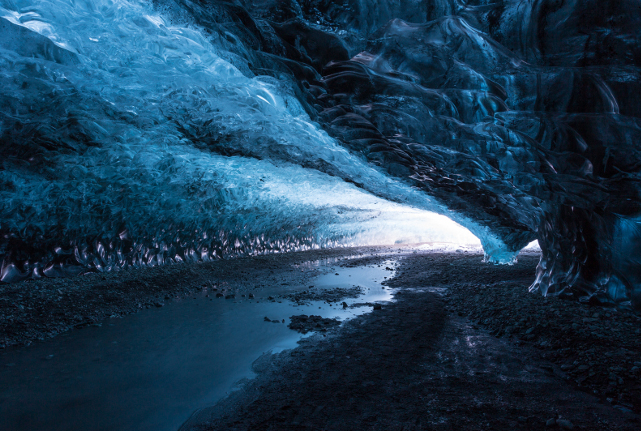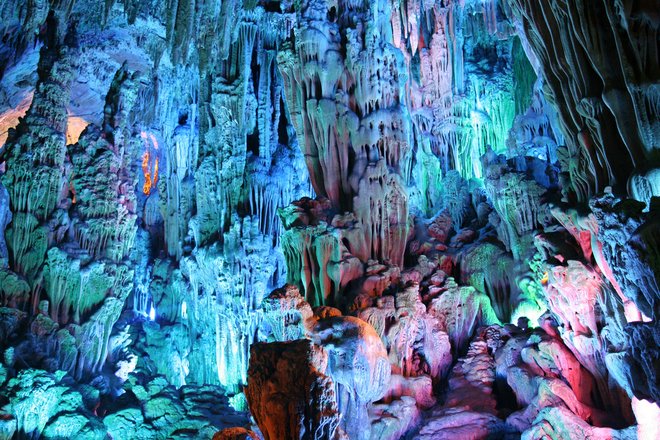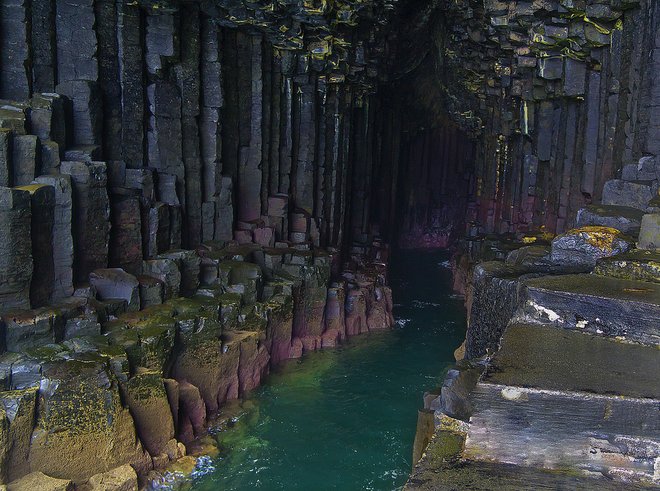The earth has many beautiful wonders on its surface, but a surreal landscape lies below in caves. Humans have been exploring the earth’s pockets for millennia, and there are still many of the marvels waiting to be discovered. Here, we’ve picked six incredible caves that you can visit on your next trip. Now, we don’t recommend exploring these caves on your own, unless you’re a professional spelunker (and you get permission from the powers that be), but luckily, there are guided tours available for the more casual subterranean explorer.
1. Kverkfjöll Ice Caves, Iceland
Courtesy of Flickr/David Phan
A literal hotbed of geologic activity, Iceland, which sits on the Mid-Atlantic Ridge dividing two tectonic plates, is unsurprisingly home to plenty of caves. But they’re not all your traditional rocky phenomenon. A magma chamber beneath the Vatnajökull glacier melts some of the ice above, forming the glassy-looking Kverkfjöll ice caves. While they’re quite beautiful, visitors need to be careful—parts of the caves can collapse as temperatures rise, so it’s best to book a guided tour with an expert.
2. Reed Flute Cave, China
Courtesy of Flickr/Bernt Rostad
This natural limestone cave in southern China has been drawing visitors for centuries (there are ink writings on the walls that date to the eighth century). But it was forgotten about in the modern era, until refugees rediscovered it and took shelter inside during World War II. Today, the cave is a technicolor wonder, its stalactites and stalagmites illuminated by colorful lights, creating a dazzling, surreal experience.
3. Son Doong Cave, Vietnam
https://www.instagram.com/p/ymRD4OoEio/
The largest known cave, Son Doong, was only brought to the world’s attention in 2009, proving that we have a lot more exploration to do when it comes to cave systems. It’s over 5.5 miles long, and in some places 660 feet high and 500 feet wide—big enough for a Boeing 747 to fly through the largest chambers. Son Doong has only been open to the public since 2013, and visitors need to book an official expedition to tour it.
4. Waitomo Glowworm Caves, New Zealand
https://www.instagram.com/p/BMGhRP8heyU/
On the North Island of New Zealand, this cave system holds an illuminating surprise. Thousands of tiny glowworms endemic to the country live in the dark, damp caves, giving off an electric blue light. There are a variety of ways to tour the caves—walking tours, boat trips, blackwater rafting, or even zip-lining.
5. Fingal’s Cave, Scotland
Courtesy of Flickr/dun_deagh
What makes this seaside cave in Scotland stand out are its geometric stone columns, which are so perfectly angled it seems as if they were cut by hand. The geological phenomenon was created when an ancient lava flow cooled, forming the hexagonal basalt structures. Fingal’s Cave was a highly popular attraction in the 19th century, drawing the likes of author Jules Verne, poet John Keats, painter J. M. W. Turner, and even Queen Victoria. Today, visitors can sail past the entrance on a boat, some of which are allowed to enter the cave.
6. Marble Caves, Chile
https://www.instagram.com/p/BPol_jNAfwh/
Located on a peninsula on the remote Lake General Carrera, the caves were carved out by waves over thousands of years. As the cave walls are pure marble, ribbons of color run through them, creating undulating patterns. Only intrepid travelers will be able to experience the multi-colored Marble Caves in Chilean Patagonia. Boat tours launch from Chile Chico—which is more than 500 miles from the nearest international airport (Argentina’s Río Gallegos Airport).
You’ll Also Like:
- The Coolest Cave Rooms in Cappadocia
- Grottos, Caverns, and Lairs, Oh My! Six Hotels with Cave-Like Spaces
- The 7 Scariest Cliff Diving Spots in the World
All products are independently selected by our writers and editors. If you buy something through our links, Oyster may earn an affiliate commission.



